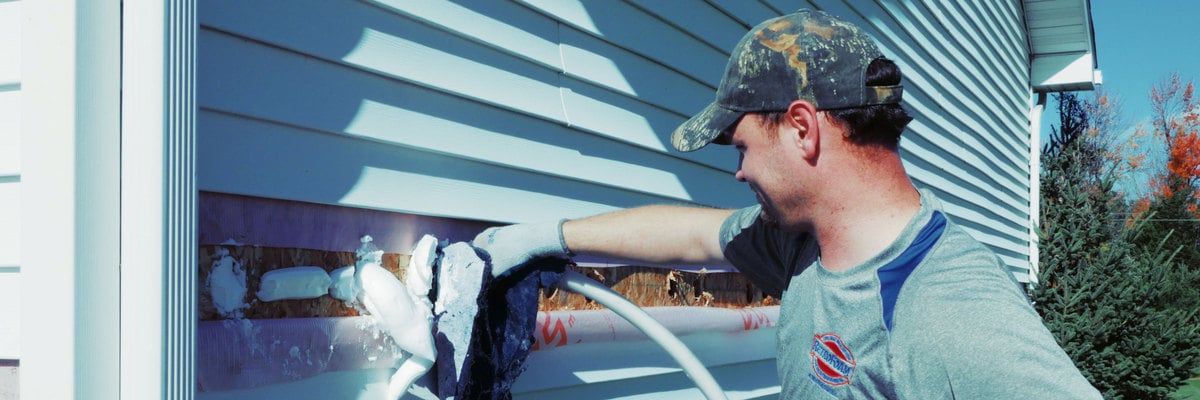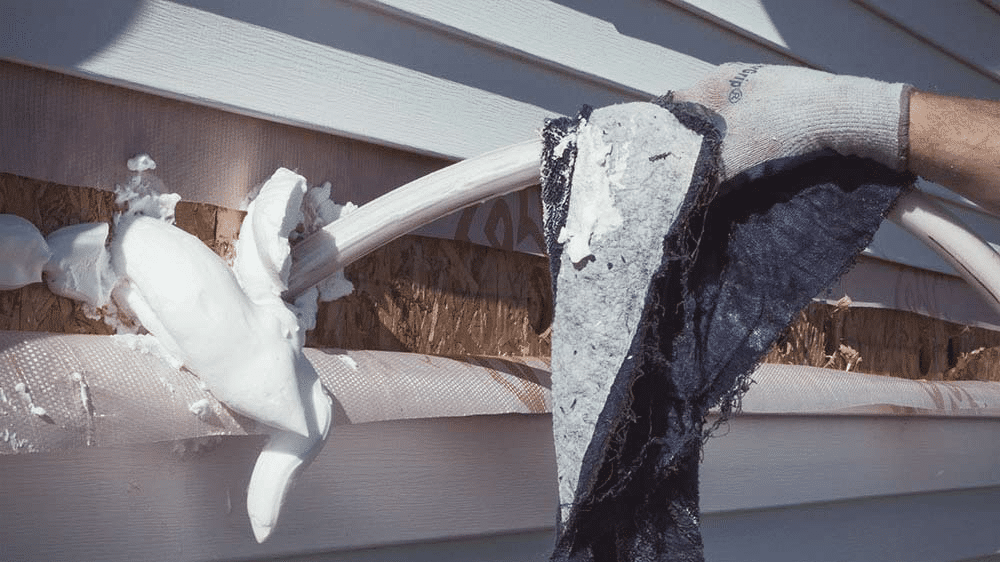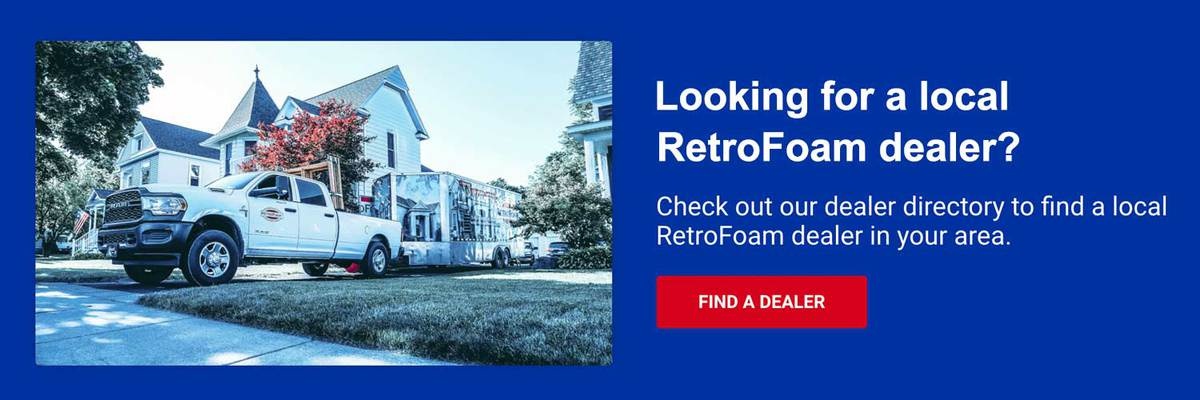USA Insulation vs. Applegate vs. Tripolymer: What is the Best Insulation for Existing Walls?


You have decided that foam insulation is the best fit for the existing walls of your home, but now you need to decide which manufacturer will get the job done.
Foam insulation for existing walls is made by three companies – USA Insulation, Applegate, and Tripolymer.
RetroFoam of Michigan has more than 20 years of experience insulating thousands of homes across Michigan's Lower Peninsula, so we are experts in foam insulation in existing walls.
As part of our continued efforts to educate our customers and help them make the best decisions for their homes, we are here to discuss the best types of foam insulation for existing walls.
Who are Tripolymer, Applegate, and USA Insulation?

There are a lot of options when it comes to existing wall insulation, but when it comes to injection foam, there are only a handful of options.
Tripolymer Insulation
Tripolymer is a family-owned business that prides itself on being pioneers in phenolic-based wall insulation.
Their eco-friendly, fire-resistant foam insulation is a great pick for those looking to enhance their home's environmental footprint.
Applegate Insulation
Established in 1952 as a heating and cooling contractor, Applegate shifted gears in the business to offer insulation by 1978.
They now supply high-quality foam insulation designed for quick, efficient installs, making them a popular choice among contractors.
USA Insulation
Bringing comfort to homes for more than 35 years, USA Insulation has carved its niche with expert services for residential and commercial projects.
Known for their proprietary foam insulation, they aim to make your home not only more energy-efficient but also quieter and more comfortable.
What is Injection Foam Insulation Made Of?
While USA Insulation, Applegate, and Tripolymer all offer injection foam insulation, the composition and what the foam is made up of are different.
Tripolymer Insulation
Tripolymer is made from the same family of thermosetting plastics that billiard balls are made from.
It also has some fire-proof coatings. Tripolymer is non-toxic and eco-friendly, according to the Tripolymer website.
Applegate R-Foam Insulation
Applegate R-Foam Insulation is a two-component foam product that is installed using compressed air with high-speed installation equipment.
A kiln-dried, water-based powder resin is combined with a foaming agent catalyst to produce a freshly mixed product for each project, according to the Applegate’s website.
USA Insulation
USA Insulation uses a specially formulated foam that fits snugly into existing walls.
The injection foam insulation offered by USA is an aqueous resin solution and foaming agent. The ingredients are combined with compressed air and specially engineered metering and pumping equipment, according to the USA Insulation website.
Are Tripolymer, Applegate, or USA Insulation Foam Insulations Safe for the Home?
When choosing insulation for their homes, the first question homeowners have is whether the product is safe to use.
Tripolymer Insulation
Tripolymer does not use formaldehyde in the manufacturing process.
It is safe, water-soluble during installation, biodegradable, and does not emit toxic gasses during or after insulation, according to the company’s website.
Tripolymer can also help prevent the spread of fire through the walls of the home.
Applegate Insulation
Applegate is Class One Fire Rated.
The product has less than .25 percent formaldehyde content in its resin and below detectable limits of formaldehyde off-gassing, according to the company’s website.
USA Insulation
USA Insulation offers products that are both effective and safe, focusing on reducing potential allergens and harmful chemicals in the home, according to the company's website.
USA foam insulation has a Class A rating, according to the guidelines outlined in the ASTM E-84 testing.
What is the Existing Wall Insulation Process?
All three foam insulation companies follow the same procedure for installing injection foam insulation in existing walls.
Injection foam can be installed into an enclosed cavity, such as existing walls
with no need to tear down walls or wait
until you remodel.
- Injection foam insulation can be installed without removing the outdated fiberglass insulation.
- Exterior existing walls can be insulated with injection foam from the outside in most cases. There are rare instances when it is necessary for crews to insulate from the inside of the home.
- For homes with aluminum or vinyl siding, a piece is removed from the house, and a hole is drilled into each stud cavity. Any excess foam is then cleaned up, the holes are plugged, and the siding is replaced.
- For brick homes, small holes are drilled through the mortar joints between every stud to inject the foam insulation. Once the cavity is filled, the holes are re-mortared.
- Wood siding is trickier to work with. If the siding can be easily removed, the same process for aluminum and vinyl siding is followed. If the wood siding can’t be removed, holes must be drilled through the wood siding. The holes are then filled with wood plugs.
What is R-Value?
R-Value is defined as an insulation material’s capacity to resist heat flow.
That basically means if the material has a higher R-Value, then it has greater insulating power. While R-Value is important to understand, it’s not the revered determiner for all things insulation.
Reducing an insulation material to just a number doesn’t tell the entire story. Heat flows in and out through radiation and convection. Heat loss through convection, or airflow, can account for around 40 percent of total energy loss in the home.
This can become a huge issue if you are only using R-Value to choose the insulation for your home.
Does Tripolymer, Applegate, or USA Insulation Offer Sound Dampening Qualities?

Most homeowners are looking to make their homes more comfortable and energy-efficient.
One benefit of some foam insulation is that the material is excellent for cutting down on noise coming in from the outside. It is important for the homeowner to research the type of foam their contractor is using to ensure it has sound dampening qualities.
Tripolymer, Applegate, and USA Insulation all have sound dampening qualities that keep those neighborhood sounds outside where they belong.
Choosing the Best Foam Insulation for Your Existing Walls
Now that you have read about your injection foam insulation options, you might want to learn more about what RetroFoam has to offer.
Our Learning Center has a ton of resources that you might find helpful in your educational journey.
If you have decided that RetroFoam injection foam insulation is the better fit for your home's existing walls and live in Michigan’s Lower Peninsula, call us at 866-900-3626 for a free estimate or fill out the form on our website.
Related Articles
What is Injection Foam Insulation? What it’s Made of, How it Works, & More
What is the Best Insulation for Exterior Walls?
About Amanda Ringler
Amanda previously has worked as a breaking news and crime reporter, TV news producer, and editor in Flint and Detroit. Throughout her career as a journalist, she has won several awards from The Society of Professional Journalists - Detroit Chapter and the Michigan Press Association. As part of the RetroFoam of Michigan family, Amanda uses her experience as a journalist to write content that will help educate homeowners on the benefits of foam insulation. When Amanda isn’t writing, she’s spending time with her husband and rescued huskies. She also loves knitting, making art, cooking, and hosting dinner and a movie night for friends and family.

.jpg)
